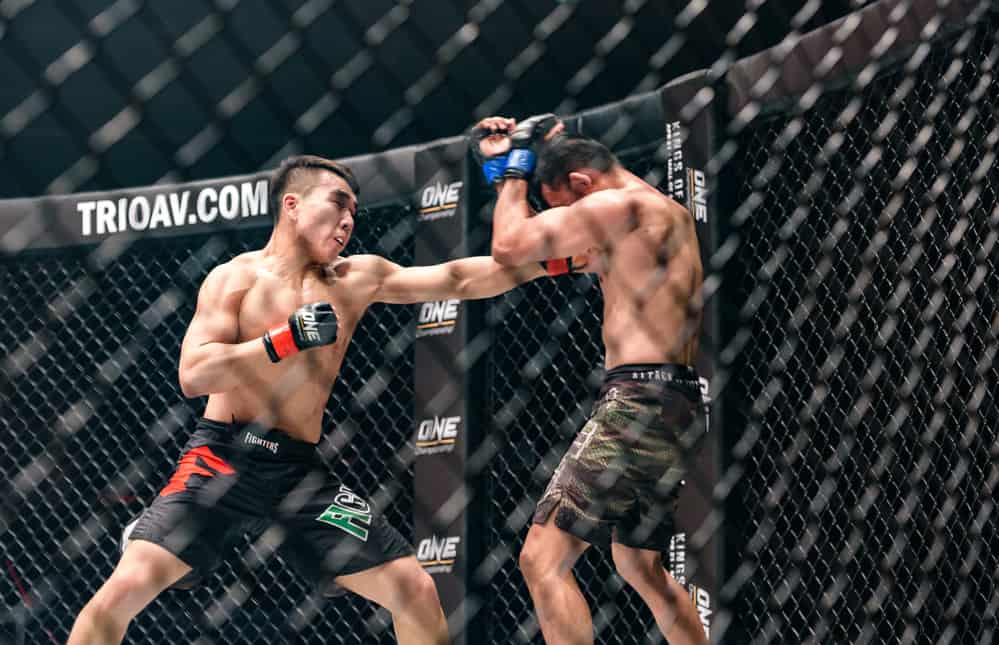When it comes to training and improving your striking for MMA there is a lot you can do on your own, outside of the gym and without a partner.
Grappling for MMA on the other hand requires a lot more partner work.
While there is definitely a lot you can work on solo for MMA grappling, you can definitely put in a lot of work on your own, even at home to improve your striking for MMA and take it to the next level.
There are always, always aspects of your striking and striking defense for MMA that you can put extra work in for when you are alone at home or locked down due to movement restrictions.
And putting in extra work definitely does not need to affect your recovery or be an extra burden on your body if you are already training hard.
This post will give you 6 sure fire ways to improve your MMA striking, efficiently and effectively without burning you out.
What’s more is that all this extra work can be put in at home, solo and outside of the gym.
This extra work when no one is watching is really what divides those who find success and those who do not in martial arts.
So without further delay let’s get into it!
1. Coordinating Your Hands & Feet
Being able to move and strike is an undervalued skill and one that can be improved with simple drills done repetitively.
Moving in multi directional planes while throwing strikes and defending from strikes will give you a major advantage over an opponent who is less mobile and less coordinated with their hands and feet.
Being able to punch and step – punch and step is an incredibly important foundational skill to have in all striking, and especially so in MMA.
A simple drill you can perform regularly solo as part of your warm up or even at the end of training as part of a cool down is the hands and foot work drill developed by Duane Ludwig.
2. Drilling Feints and Fakes
Often times when shadow boxing and solo drilling we are guilty off focusing on striking and throwing strikes and tend to ignore the “in between” areas which really are the places where we can set up more effective strikes.
By feinting and faking a low kick and kicking to the head, especially after setting it up with a couple of good low kicks early on or at least threatening with the low kick – you can get a reaction from your opponent which can be the split second you need to land that KO strike.
Rose Namajunas head kick against Zhang Weili is a perfect example of using feints and movement to get a reaction and strike where the opponent does not expect.
When shadow boxing and on the heavy bag incorporate feints and fakes into your movement.
Practice setting up strikes by faking or feinting other strikes.
The easiest way to think of a feint is to take a normal strike – say a Jab, then only execute the initial 2-5% of the actual Jab movement and stop. Then flow into another feint or move again in and out of range.
Remember to actually sell the strike so initiate the strike exactly as if you were to throw the full strike (whether punch or kick) and only do the first 2-5% of the actual strike (but as if you were going to actually throw it).
This is an effective fake or feint.
To make fakes or feints even more effective it is always good to land an effective strike to make your opponent wary of you landing this strike again which makes feinting or faking it work really well.
3. Head Movement when Striking
Head movement while throwing your strikes will go a long way to make yourself a much harder target to hit and less likely to be effectively countered also.
Practicing head movement while striking also allows you to put yourself in position to be effective with your counters and moving your head off line of an incoming punch while being able to simultaneously throw and land your punch is a key skill to develop.
In your shadow boxing and heavy bag work training solo, practice moving your head off line with your punches.
For example in Orthodox stance when throwing a jab simultaneously dip your right shoulder and move your head off center to the right as if slipping while also throwing and extending your Jab.
You can do this with any punch.
Leaning your head back when throwing a round house kick is also useful to be able to counter your opponents punch with a roundhouse kick to the body at the same time as they throw a punch while keeping your head in a safe position.
4. Same side attacks
Opposite side attacks are the standard in striking.
- Jab – Cross – Hook
- Jab – Rear Kick
- Cross – Lead Switch Kick
These are standard opposite side attacks which take advantage of your bodyweight shift and momentum to effectively switch strikes on the opposite of your body to make use of momentum to generate power.
A more advanced striking for MMA tactic is to double up your attacks on the same side.
This makes less predictable and jharder to read while giving you creative combos to keep your opponent off balance.
The Jab to same side head kick can work really well in MMA especially after setting it up with effective Jab-Rea Kick combos that land on your opponent.
Getting them to react and defend the opposite side off the jab leaves their same side open to strikes if only for a brief movement that you can exploit.
The Body Hook – Head Hook on the same is another useful boxing combination that also works well to make you harder to read.
There are countless combos you can develop and use but the main concept is to double or even triple up your attacks on the “same -side”.
5. Striking Level Changes
Donald Cerrones’ beautiful Jab-Body Shot-Head Shot – Head Kick combo is a great example of changing levels with your strikes.
Cerrone landed this beautiful combo against Rick Storry at UFC 202 in 2016.
One of the most beautiful examples of off balancing your opponent with combos that change levels and make your opponent completely helpless as to where to defend next while opening them up for a potential fight ending KO.
6. Striking from the Clinch
The clinch is a major aspect of MMA especially for a striker who wants to keep the fight standing as much as possible.
Being well rounded you should always be comfortable going to the ground but a good striking game from the clinch can go a long way to discouraging your opponent if they prefer to clinch up and take you down.
Being proficient with elbows and knees from the clinch will give you an advantage of a less proficient clincher in MMA while also effectively defending takedowns and also hurting your opponent with effective knees to the body and elbows to the face – keeping them off balance.
Probably the best muay thai practitioner in MMA and the UFC right now, Loma Lookboonmee demonstrates beautifully how this is done.
You can train strikes from the cling with the heavy bag as is standard in muay thai with repetitive clinch knees and knee to elbow and elbow to knee combos both in shadow and also on the bag.




